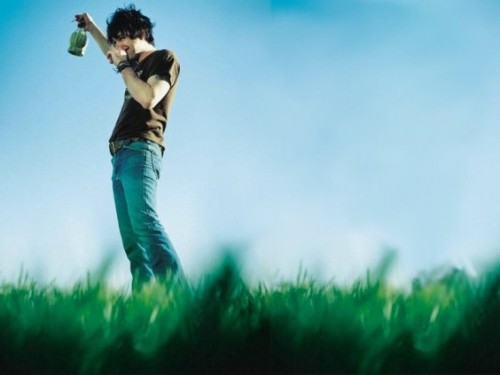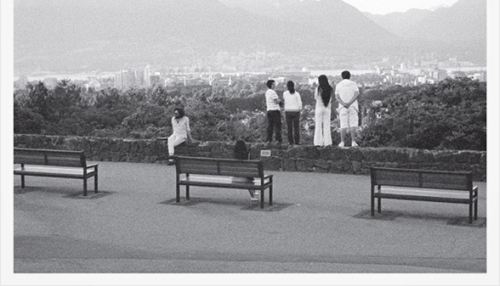Gillian Welch – The Harrow and The Harvest (2011)
Issued some eight years after 2003’s Soul Journey, it would be wrong to describe The Harrow and the Harvest as a hotly anticipated release, a phrase usually reserved for the second album of a promising debutant. Instead, I, like many, had largely forgotten that Welch was still out there in the musical ether, battling against writer’s block to compose a new batch of lazy country numbers with long-time partner and collaborator, David Rawlings (both of whom were heavily involved with Ryan Adams’ Heartbreaker).
The Harrow makes no attempts at a new musical direction, nor should it when you are widely regarded as one of the finest roots singers of your generation. Instead, it’s business as usual as Rawlings’ fingers scale the steel strings like an enchanted spider on gentle opener Scarlet Town before giving way to the naked beauty of Welch’s soaring voice on Dark Turn of the Mind. Each song is exemplary and without flaw, and I can think of few finer albums to stick on at a generous volume on a Sunday afternoon while reclining, eyes shut, on the sofa while the woozy charm of classic Americana passes over you. It is a cleansing experience.
By all accounts the duo come into their own during live performances, where familiar songs are treated to new meandering arrangements and I must make a point of seeing a show the next time they are in the UK. Check out the gorgeous clips below. Admittedly, Miss Ohio is not from the new album but it is one of my favourite songs – any excuse etc…
Ryan Adams – Ashes and Fire (2011)
The inclusion of Adam’s 13th studio album on this list (not taking into account his Whiskeytown records, Suicide Handbook, bootlegs etc) is more a reflection on my joy at hearing him put out some decent music for the first time since Cold Roses, a two-disc release from 2005, rather than this being a gold-plated must have. For those not familiar with Adams other than his Wonderwall cover (which Noel Gallagher started to use himself afterwards), to many people he was – for a few fleeting years – the finest musician of his generation who proceeded to waste his prodigious talent on liquor, drugs and dubious musical choices. I can still recall the goose bumps on my arms when I saw him for the first time at a sweaty Bristol Academy in January 2004 (Jesse Malin stood a few feet away from me) –a performance that ended with the wasted Adams deserting his band and playing Nobody Girl on the bar while bumming cigarettes off the ever-obliging and rapturous crowd. Despite his inebriation, the show was a blinder. At his next performance in Liverpool, his luck ran out and he feel off the stage, braking his wrist in the process which hampered his playing for many years.
Ashes and Fire is a welcome move away from the guitar-driven sound of the later Cardinal albums to the country soul/stripped-back sound of Whiskeytown and his masterpiece, Heartbreaker. As with all of Adams’ best records, the guitar playing is simple yet thoughtful and tight, with percussion only- if at all –featuring as gentle back-up, rather than a dominant instrument. Not all of the tracks work: Come Home is a pedestrian non-event and Save Me is – to quote Lars Ulrich in Some Kind of a Monster – undoubtedly ‘stock’. However, the rest of the album is solid fare, with Dirty Rain, the title track and Lucky Now welcome additions to the Adams cannon. You get the feeling listening to Ashes and Fire that this is the sober Adams working out how to write decent music without the sauce – a record as therapy, if you like; fingers-crossed the next ones will see him reach the levels of old.
Jay-Z and Kanye West – Watch the Throne (2011)
Kanye and ‘The Jigga’s’ 2011 joint offering is the aural equivalent of going full retard – a brazen homage to fame, excess and bathing in the benjamins carried off with the musical and lyrical panache of two commercial rappers at the top of their game. Much has been made of the similarities to Kanye’s excellent Twisted Fantasy album, and it is true that The Throne takes in the layered vocals and eerie synths that dominated Kanye’s last album, although this is a more polished commercial sound designed to rattle the tills.
The pair are at their best delivering solid crowd pleasers such as the Redding sampling Otis, a strong contender for the Cowboy’s wedding playlist (I’d die a happy man after seeing my grandma shake her booty while mouthing “looking like wealth, I’m about to call the paparrazi on myself”), and the dirty slider Niggas in Paris (“fuck that bitch she don’t wanna dance, excuse my French but I’m in France”). Critics of the album cite the leaps in sound between tracks and indeed they don’t all flow, mixing by-numbers Rhianna-flavoured R n’ B with tight James Brown vocal samples. However this is a minor quam.
Personal favourites are Welcome to the Jungle, which shows off Jay-Z at his best, riffing to a mundane yet hypnotic staccato beat, and opener No Church in the Wild, heavy on strings with a predatory bass grove, while Kanye muses on drugs, threesomes and how Jesus ‘laid beats’. An album built on two guys talking about how great they are will to many be a nauseating affair, but I for one enjoyed shuffling on my sofa, vicariously drinking in their glory. It would be a cold man who would begrudge them their right to brag.
John Smith – Eavesdropping (2011)
Those of you who read my post on my most-listened albums of the past decade (https://shanghaicowboy.wordpress.com/2010/01/05/best-albums/) will be aware of Devonian musician, John Smith, one-time school friend of my missus and unsigned by choice. His second and last album Map or Direction was a beauty and is available to all on Spotify – give it a go.
His latest offering was recorded on a whim at his bassist’s house over a one-week period and is, as the album title suggests, a collection of covers taking in mainstream sources as diverse as The Stone Roses, Elton John and Christina Aguilera, as well as lesser-known bands. Smith is a virtuoso guitar player in the mould of John Martyn who was his mentor and with whom he played for a number of years before his passing. Therefore like Martyn, his songs rely heavily on imaginative fret work, dropped-G tuning and groove riddled guitar-slapping. What stands Smith out from other talented singer-songwriters is the depth of his voice which he showcases to good effect on Eavesdropping, in particular the wonderful Elton John cover, That’s Why they Call it the Blues (see below); a voice that hushes and booms from one moment to the next.
Other highlights are This Killer Wave penned by a local band in Liverpool (where Smith now lives) and Jenny Again by obscure folk-act Tuung. The Aguilera cover is Genie in a Bottle, and I feel truly old realising that this was released by the scantily-clad Glitter-fodder in 1999. Smith’s version is a stripped-down plucking affair and I hear that it has recently gained airtime on BBC Radio6, however for me it’s a bit of a non-event and the same applies to Not Over Yet, formerly a dance anthem (yeh man Ibiza bruv innit etc) by Paul Oakenfold, whose face I always thought bore an uncanny resemblance to a compressed pickled scrotum (or rather my projection of one). Clearly, Smith is the kind of musician who likes a cross-spectrum of styles and will never lose the desire to throw in the odd curveball. But these are minor gripes on what is otherwise an excellent interim album, pending his next proper release.
Destroyer – Kaputt (2011)
This was an impulse purchase after a suitably wordy 8.8 Pitchfork review (“the sound casts Bejar’s songs in a very particular light, and reinforces the feeling of the singer as persona” – yup, sure) and therefore I must confess to coming to the record with no prior knowledge of Destroyer or their members’ work.
The most striking thing about the album is the overall tone and sound, which flitters between Roxy Music, Steely Dan and The Pet Shop Boys, with a bit of Talking Heads thrown in (the album’s title track has a similar retro glitchy computer effect to that used in Once in a Lifetime). There is also a sense of film noir to proceedings, and I doubt that the naming of Chinatown and its inclusion as the album’s opener is a coincidence. Songs are cultured out of Casio synth, lazy chord strums, occasional heavy bass hooks and cheesy woodwind; for a moment they catch your ear before drifting off with the breeze.
Indeed, if I was to offer a one-line critique to stick on the front of the album it would probably be “sumptuous porn music by the XX” and I am pretty sure that if you crank up the volume on Blue Eyes and crane your ears to the speakers at 1:58, you can hear the gentle patting of Ron Jeremy’s waist against the buttcheeks of an obliging freshman. Ok, perhaps not but you get the idea.
It is difficult to explain why an album that is so inconsequential and derivative is both fresh and revelatory, but I think it comes down to the simple fact that each song is executed incredibly well. The title track is a good example – a multi-instrument number where deep thought has clearly been given to the timings of the various parts. The result is a rich array of sounds soaring against one another complete with soft male/female harmonies. Closer The Bay of Pigs catches you on the blindside, with a rambling vocal about nothing in particular suddenly brought to life by strings, percussion, harmonies and euphoric hand-clapping. It is a joy. Shit name for a band, though.




